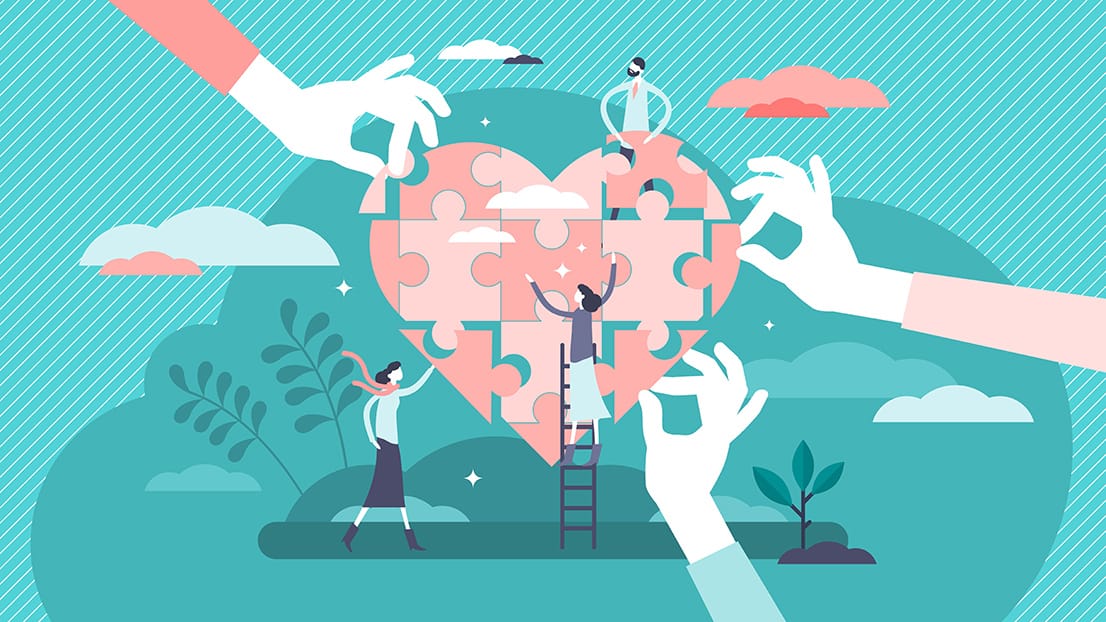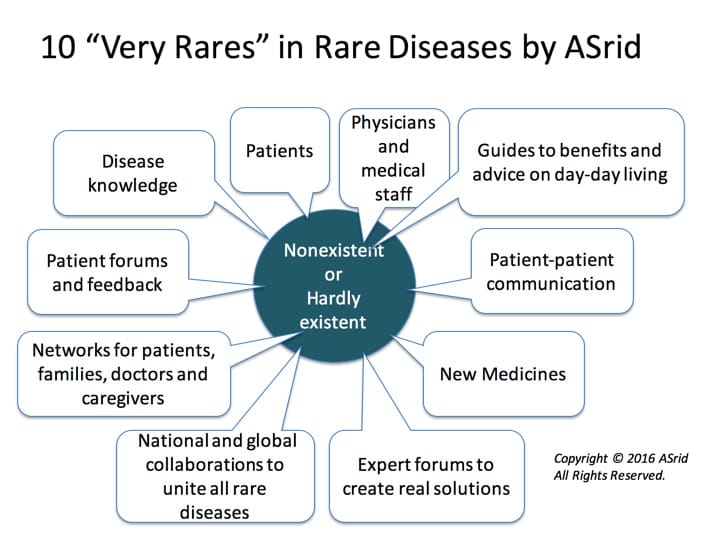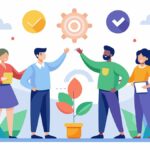The Act on Securing Quality, Efficacy and Safety of Products Including Pharmaceuticals and Medical Devices (Pharmaceuticals and Medical Devices Act) defines “Rare Disease” as that with fewer than 50,000 patients in Japan. In recent years we have seen a rise in activities being held in Japan and around the world to raise awareness of rare and intractable diseases. These are largely driven by patient groups, but pharmaceutical companies are also starting to more actively provide information and develop new drugs. Steady progress is being made, but there remain many issues to be addressed when it comes to solving challenges around rare and intractable diseases.
In this newsletter, we sit down with Ms. Yukiko Nishimura, Founder and President of ASrid (Advisory Service for Rare and Intractable Diseases), a non-profit organization that seeks to provide services to all stakeholders in the field of rare and intractable diseases. The conversation explores the current state of these challenges in more depth, as well as the next steps we should be working toward. Read on to the end for Ms. Nishimura’s full profile.
World Rare and Intractable Disease Day enters its 14th year in 2023
With a goal of improving the quality of life for patients and their families through better diagnosis and treatment of rare and intractable diseases, the last day of every February is designated as the “Rare Disease Day: World Rare and Intractable Disease Day,” with various activities held around the world. Created in Sweden in 2008, Japan has been a part of the initiative since its third year. Now in its fourteenth year, official nationwide events being held here include panel exhibitions, physical events and the lighting up of Tokyo Tower.
“The environment surrounding rare and intractable diseases has changed dramatically.”
The continued lack of accurate understanding remains an issue
Many people tend to think of rare and intractable diseases as something that only affect the unfortunate and could never happen to them. However, the truth is that anyone can develop a rare or intractable disease. It could happen to you, your family, friends, or others close to you. That is why I believe it is important to build future acceptance through more people recognizing that rare and intractable diseases are not some distant alien phenomena. This is becoming ever more apparent as we enter the “genomic age.” For example, we now have cancer panel tests and molecular-targeted drugs for extremely rare cancers. If genome analysis (of individual differences and thus personalized medicine) keeps advancing, all diseases will become “rare” by definition in the future. As such, we should not view rare and intractable diseases any differently to all diseases.
How has the situation changed since Rare Disease Day was launched in Japan in 2010?
The environment surrounding rare and intractable diseases in Japan has changed dramatically since then. At that time, there was no space in which people could speak out about their diseases. From time to time a handful of celebrity patients appeared in the media and spoke unashamedly of their experience. Their powerful attitude in front of the camera, talking about their illnesses and concerns, played an important role in making society more aware of the existence of rare and intractable diseases. I believe the environment surrounding rare and intractable diseases is what it is today thanks to their courageous efforts.
On the other hand, public perception is somewhat limited as many people only know about these high-profile cases and are unaware of other rare and intractable diseases. In our activities we try to invite a diverse range of patients to talk about their illnesses every year. These include many ordinary people who are often at a loss for words but do their best to explain their disease. Through the words of these everyday patients, we want people to understand that rare and intractable diseases are not as unusual as they might have first thought.
“Problems facing those living with rare and intractable diseases in the workplace are our problems too.”
What are some of the specific challenges faced in Japan?
There are a number of challenges when it comes to rare and intractable diseases (see image below). In each case, there are currently very few or no solutions at all. Among these so-called “very rares,” collaboration among stakeholders used to be almost non-existent. For example, events were typically siloed and organized by patient organizations or pharmaceutical companies on their own. We recently saw a media seminar where rare and intractable disease patients, their primary physicians, and executives from the pharmaceutical companies that manufacture and sell the drugs all spoke together, but such initiatives are still few and far between. We have tried to create a space for dialogue on rare and intractable diseases in as open a way as possible. We believe it is important for different stakeholders in the community and the general public to get together, consider how the problems affecting those living with rare and intractable diseases are our problems too, and what we can do to help by breaking down barriers.
Work remains one of most pressing challenges around rare and intractable diseases. Up until now, employment support has simply sought to match patients with “jobs they can do.” However, we believe that in the future it will be important to more efficiently utilize people living with rare and intractable diseases who have as much, or greater, ability as their peers. In other words, there are many rare and intractable disease patients out there who cannot work full time, but can still work efficiently within shortened work hours and accomplish excellent work, and there are also many who are able to work if they can do so online. The issue of how we work is one that affects us all as we consider how the elderly should remain in the workforce in an increasingly aging society.
The pandemic has changed the way we work
The concept of remote working has really taken off recently. Even if not living with an illness, anyone can choose to work from home when they are feeling unwell. Previously study sessions on diseases could only be held in major urban areas, but the advent of webinars has given access to those living anywhere to participate, breaking down regional inequalities. These are all positive developments, but there remain disparities that now demand new solutions, such as preventing those without easy internet access from being left behind. Moreover, the anxiety and fear we all felt during the pandemic is something that those living with rare and intractable diseases face every day. You could say that a silver lining of the pandemic was that this feeling could be shared with and understood by families for the first time.
“It is important for all of us to better understand rare and intractable diseases and take time to consider them independently.”
Appropriate information is not reaching patients
Information access is also a major issue. When diagnosed with a rare or intractable disease, the first thing most patients will do is search the disease online. However, most of the sites they’ll encounter, such as the website of the Japan Intractable Diseases Information Center, are aimed at medical professionals with content written in very direct terms. This often leaves the patient feeling shocked and reluctant to do any more research. At ASrid, we have our own web-based portal site holding information on rare and intractable diseases 1. Using this library of accurate information, users are more likely to be motivated to move to the “I want to know more” stage. Further efforts to address this issue of providing the medically accurate but easy-to-understand information that patients need will become increasingly important in the future.
What can stakeholders do to address these challenges?
We are approaching a transitional moment in the environment surrounding rare and intractable diseases. In particular, pharmaceutical companies are taking on these diseases more aggressively than we ever imagined. When we first started our activities, we thought that it would be a long time before pharmaceutical companies would be involved in rare and intractable diseases. However, the speed of such changes has not kept pace with the social structure, which is now the key factor. For example, patients and citizens have recently been taking part in drug discovery research with their opinions reflected in the research process, but unless the regulatory authorities appreciate such efforts, there is a risk that these will be one-offs and not effectively followed up.
Furthermore, in order to properly reflect the voices of patients during drug discovery, it is also important to have appropriate communication between pharmaceutical companies and patients. Patients cannot simply push through their own demands, and pharmaceutical companies and medical professionals also need to learn what it means to better listen to patients’ voices. The only way to achieve this is for stakeholders to cooperate with each other and keep up the process through repeated trial and error.
What steps can you and I take to address these issues?
I think it is important for all of us to better understand rare and intractable diseases and take time to consider them independently. For this year’s World Rare and Intractable Disease Day, university students came forward saying they wanted to take part in activities to raise awareness as they couldn’t find any being held in their prefecture, a shopping district took a central role in some activities, and a prefectural library displayed books on rare and intractable diseases. We are starting to see people outside of the traditional stakeholder profile taking steps to learn about rare and intractable diseases and pro-actively participate in activities. I cannot help but be impressed when I think that these movements are not the result of someone else’s initiative, but rather the result of that individual’s own thoughts and action.
And I believe there is room for this movement to keep growing in the future. If more and more people become aware of the issues around rare and intractable diseases, think about what they can do, and communicate their thoughts, I am confident that the environment around rare and intractable diseases in Japan will be able to take the next big step forward.
 Profile: Ms. Yukiko Nishimura
Profile: Ms. Yukiko Nishimura
President and founder of NPO ASrid (Advocacy Service for Japanese multi-stakeholders in Rare and Intractable Diseases)
Yukiko has worked and collaborated with patients, their families, and stakeholders in the rare and intractable diseases and orphan drug field for over 15 years. Her previous roles include Chief Secretariat of International Relations, Japan Patients Association (2011-2016), Assistant Professor of Research Center for Advanced Science and Technology at The University of Tokyo (2007-2015), Visiting Lecturer at the Institute for Integrated Cell-Material Science, Kyoto University (2009-2012), and technical consultant at MEXT (Ministry of Education) (2005-2009). A graduate of The University of Tokyo, Graduate School of Science, she also holds her BSc and MSc from Meiji University.
For more information on rare and intractable diseases
●ASrid, a nonprofit organization
https://asrid.org/en
●Rare Disease Day (World Rare and Intractable Disease Day)
https://rddjapan.info/
●Rare Disease Day 2023 activities in Japan
https://rddjapan.info/2023
Previous COSMO PR Newsletters
●Spotlight on Women’s Health in Japan: The role of femtech in the lives of women
https://cosmopr.co.jp/en/womens-health-in-japan-en/
●The current state of women’s mental health in Japan: How should we respond to deepening challenges brought about by the pandemic?
https://cosmopr.co.jp/en/the-current-state-of-womens-mental-health-in-japan-en/
●Women’s mental health advice from a medical practitioner in the field: The importance of creating a supportive atmosphere for those experiencing mental health issues
https://cosmopr.co.jp/en/womens-mental-health-advice-en/
STEP stands for “Strategic Translational Action for Empowering Patients,” which aims to “serve as a strategic bridge to help patients and families empower themselves.”
https://www.step-rd.info/learning







